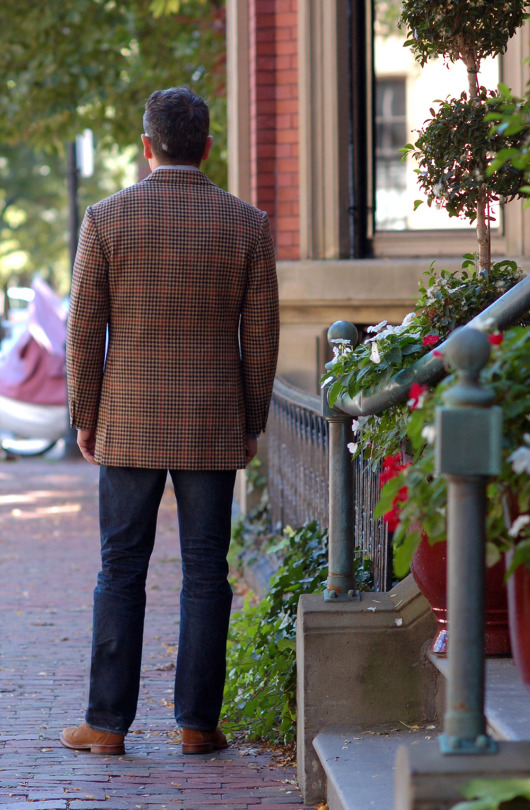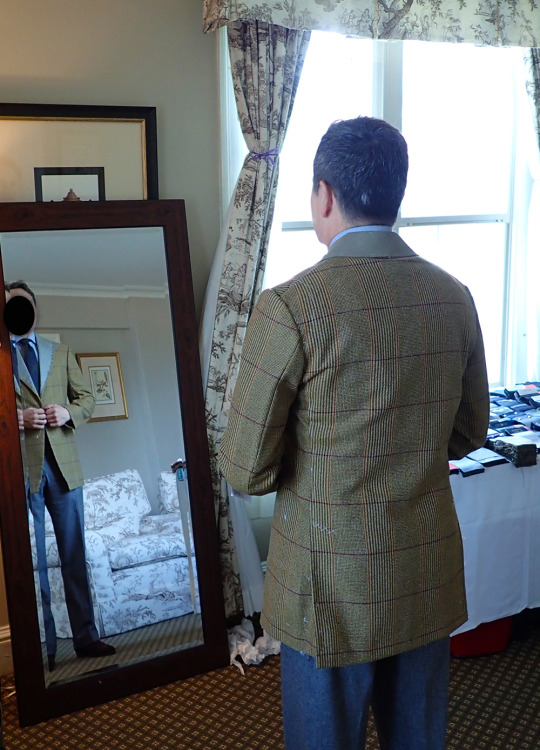
One of the nice things about working with Steed is that they’re able to produce a single-piece back. Traditional patternmaking dictates that a center seam has to be put into the back of suit jackets and sport coats (if you pick one up, I’m sure you’ll see it). Much like darts, that seam is used to add shape – which is important since your spine naturally curves from the nape of your neck down to the small of your back, and then out again towards your seat.
The problem is that the seam disrupts patterns. It’s unavoidable, really. If you think of how a pattern runs on a fabric (usually like a straight grid), it will naturally look off once it curves at certain parts. You’ll notice this most easily on pinstripes, where the spacing between the stripes is widest at the shoulder blades, before they curve in and touch at your waist.
Steed solves this by getting all the shaping out of the side seams. So, without that center seam, your back has a smooth, uninterrupted pattern.
Patternmaker Jeffery Diduch has a nice post about this at Tutto Fatto a Mano. The technical details may lose some readers, but in certain respects, the process is straightforward. You can see Edwin start a one-piece back in the video above. Here, a charcoal windowpane is folded over, then the paper pattern is pushed right to the edge of the fold. When drafted and cut, you have a single back panel (rather than two pieces that need to be stitched together). The sides here have been adjusted to give the waist some shape, but it’s otherwise just sewn as normal to the front parts.
The downsides? Well, for one, it’s a little trickier to make adjustments in the future (possibly important if you gain weight). Whereas an alterations tailor would normally let out the back seam, he or she now has to play with the sides. Second, you don’t get as much shaping as you would with a more traditional construction. See the back of Simon Crompton’s Chittleborough & Morgan suit for a nice example.
Single-piece backs won’t work for everyone. If you have a very athletic figure with a big drop, you may need that center seam in order to get the necessary shaping (again, there’s only so much that can be taken from the sides). That said, Edwin tells me he’s yet to come across a client where one couldn’t be made. Nowadays, I get them on about half of my checked tweeds, depending on the style and scale of the pattern.
For those interested, Steed is touring the US next week (and will be here until the middle of June). Their schedule includes seven cities now, and they offer both bespoke and made-to-measure. You can see their tour schedule here.
(photos via Voxsartoria)


